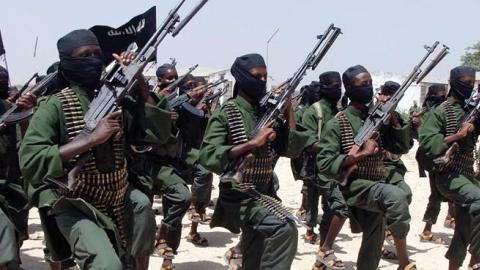On December 16, the US District Court in the Southern District of New York unsealed an indictment against a Kenyan member of al Shabaab, the Somalia-based, al Qaeda-affiliated terror group. The individual, Cholo Abdi Abdullah, stands accused of plotting to hijack an aircraft to conduct a 9/11-style attack on US soil.
Prosecutors allege that from 2017 until his arrest in July 2019, Abdullah completed flight training in the Philippines at the behest of al Shabaab. While the indictment does not state that al Shabaab gave Abdullah any specific country to target, the US seems to have been Abdullah’s objective, as he spent this time researching American skyscrapers and the US visa application process online.
The indictment is concerning, as it suggests that al Shabaab harbors an aspiration to attack Americans outside of East Africa, something it has never done before (threatening rhetoric notwithstanding). The indictment does not come as too much of a surprise, however, as US officials have recently sounded the alarm about al Shabaab’s plans to attack US interests further afield. According to US officials, Abdullah is one of two al Shabaab operatives to have taken flight lessons in recent years.
At the stage, the limited details laid out in the indictment raise as many questions as answers. That said, this apparent 9/11-style plot serves as a reminder, paradoxically perhaps, that the threat from jihadist terrorism today is quite different in both degree and nature than it was in September 2001.
At the risk of oversimplifying, the analytical debate surrounding jihadist terrorism, particularly in Africa, often takes the form of a “local vs. global” binary: Are groups like al Shabaab primarily products of local political conditions and their objectives limited to the country (or countries) in which they operate? Or are such groups nodes in a transnational jihadist organization (i.e. the Islamic State or al Qaeda) who ultimately answer to a single leadership whose primary goal is to establish a global Caliphate, attacking the West in the process?
From what we know of Abdullah’s case so far, it seems to underscore how this binary is misleading. We should not assume that African jihadist groups will never attempt to strike the West on their own initiative, nor should we view African jihadist groups primarily as extensions of a transnational jihadist “core” and ignore their local roots, objectives, and dynamics.
Prosecutors have not alleged that al Qaeda’s “core” leadership (i.e. the possibly-late Ayman al Zawahiri and his top associates, such as the certainly-late Abu Muhammad al Masri) played any role in Abdullah’s decision to enroll in flight school. According to the indictment, this effort seems to have been the brainchild of at least one senior commander in al Shabaab. We cannot rule out that al Shabaab cooperated with another affiliate within the al Qaeda network to plot this attack (the group has cooperated with such affiliates before), but we have no reason at present to believe so.
The indictment notes that al Shabaab has escalated its efforts to target US interests as part of a global al Qaeda campaign launched in response to the Trump administration’s decision to move the US embassy in Israel to Jerusalem in 2018. Al Shabaab’s own propaganda has claimed as much, attributing several high-profile operations to an ongoing campaign entitled “Jerusalem Will Never Be Judaized.” But it is an open question as to how much al Qaeda has influenced al Shabaab’s operational decision-making since 2018. There is no hard evidence that al Qaeda officials outside of East Africa have directed or offered guidance for any of the operations conducted under the banner of this campaign, the first of which—a January 2019 assault on an upscale office complex in Nairobi—may well have been planned before the embassy move.
Similarly, yesterday’s indictment alleges that Abdullah began looking for flight lessons back in 2016, well before the “Jerusalem” campaign began. That same year, in fact, al Shabaab attempted its first and only bombing of a commercial airliner, a bomb that was initially intended for a Turkey-bound flight, according to al Shabaab. In other words, the Trump administration’s policies in Israel, and Zawahiri’s response, do not appear to have catalyzed al Shabaab’s interest in striking outside of East Africa. Al Shabaab commanders might have their own reasons for plotting such attacks, after all, reasons grounded in both a Salafi-jihadi ideology that it shares with the rest of the al Qaeda network (e.g. “the US is the Great Satan and we must establish a Caliphate to save Islam”) as well as practical calculations specific to al Shabaab’s insurgency (e.g. “the US military and its allies are attacking Somalia, so we must strike their interests spectacularly to force their retreat”).
All of this serves as a reminder that international terrorist plots are the not reserve of the “core” leadership of al Qaeda, which no longer exercises anything like the relatively centralized command and control that it did on 9/11. After all, the main source of al Qaeda-linked plots in the West from the mid-2000s onwards was not Afghanistan or Pakistan but Yemen, where al Qaeda in the Arabian Peninsula (AQAP) operates. This one nascent plot does not indicate that al Shabaab is assuming AQAP’s old mantle as the principle source of international al Qaeda plots (indeed, while AQAP is far weaker than it was a decade ago, it has been linked to one attack on US soil over the past year). But as Bobby Chesney notes in Lawfare, Abdullah’s case is certainly a red flag.
The flip side of al Shabaab’s operational autonomy is that by portraying Abdullah’s case as al Qaeda’s second attempt at 9/11, tempting as it may be, one risks obscuring the reality of how jihadist movements like al Shabaab operate. Al Shabaab’s relationship with the rest of the al Qaeda network is real and important, but the organization is markedly different from the Arab-dominated outfit that brought down the twin towers (an outfit whose original leadership has been heavily culled in the nineteen years since). Furthermore, we do not know whether Abdullah’s plot was as sophisticated as the original 9/11 attacks, which involved multiple hijackers on multiple planes (the indictment hints that others were involved in the plot, though in what capacities is unclear).
All this to say, to treat al Shabaab merely as an appendage of the late Osama bin Laden’s organization belies its East African nature and the ways in which it operates first and foremost as a political actor within Somalia’s long-running civil war. If policymakers approach al Shabaab primarily as a transnational terrorist threat and not as a dynamic insurgency with broad—and primarily East Africa-specific—socio-political objectives, they risk repeating many of the mistakes that have plagued US policy since the first days of the “war on terror.”
Needless to say, Abdullah’s case is a cause for concern. But it is also a cause to reconsider some of the prevailing paradigms used to interpret jihadist terrorism, a phenomenon that has evolved significantly since 2001.



















